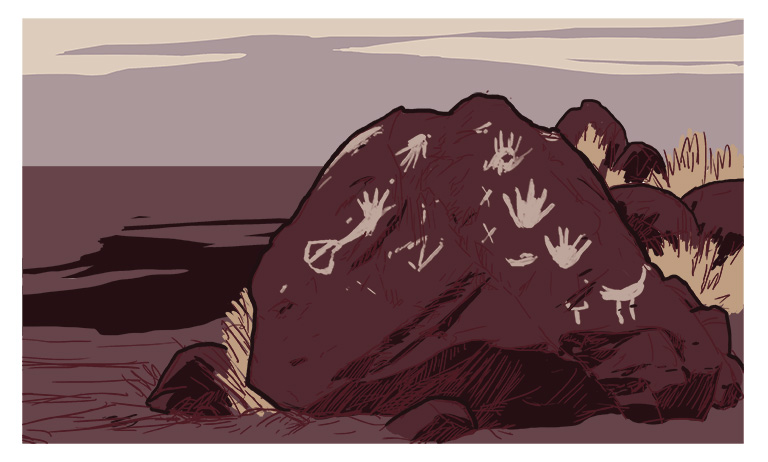Rising to the west of Albuquerque, the New Mexico Petroglyph National Monument spans 17 miles along the west mesa.
The Eastern boundary of the mesa is defined by an escarpment bordering the Rio Grande floodplain and continues up into the area of the National monument. The features of which were formed from a chain of dormant fissure volcanoes, which created an elevated landmass composed mostly of darkly colored volcanic basalt.
The dark volcanic rock is not the only feature defining the monument, but it is an important feature for more than just significant geological formations.
The basalt was used as the medium of Native Americans and early Spanish settlers to carve out more than 24,000 images still visible on the walls of the monument to this day. Most of the images were created between 400 to 700 years ago, featuring depictions of local wildlife, humans, spirits, and Christian iconography, including crosses and brands with some depicting more complex scenes and designs.
As the people who created them have since moved on from the area, there is no written history to document what the images symbolize. There is speculation that the images could be directional signs, religious imagery, or ritualistic, similar to the cave paintings at Lascaux. The vast time span in which they were created allows for a diverse number of possible reasons for the images to exist, but in the end, they were all made by humans. As a species humans are social creatures, often creating things to feel a sense of belonging, endeavoring to make a mark on the world so that a legacy of existence is forged after death. Though these petroglyphs have lost their original meaning through time, they still carry the weight of our possible ancestor’s existence across time.
In some small way, the petroglyphs were a way for those wandering the deserts of the land which would eventually be New Mexico to show that they lived, and they stood in the footsteps of their ancestors as well, signifying not only their existence but that they too were part of a larger human community, bridging borders, time, and language.

